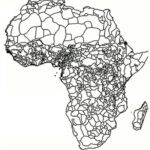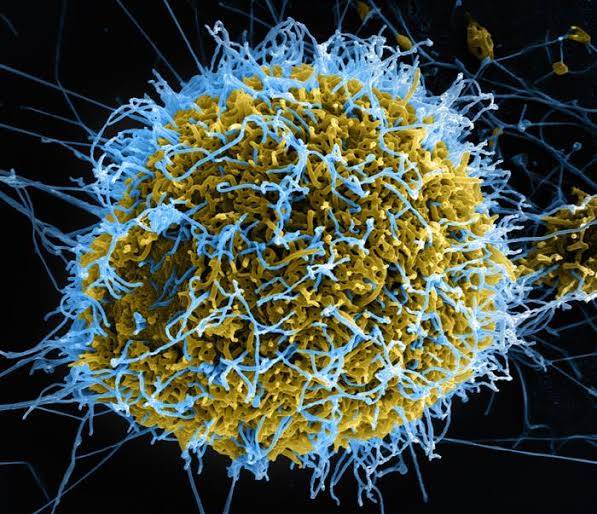The number of ebola patients in West Africa is declining.But it will be a daunting task to completely eliminate the epidemic.Epidemiologist Ger Steenbergen works as a health expert at the Dutch Embassy in Ghana.He calculates that around 20 000 people have died last year of ebola. Last year, he travelled extensively in the ebola affected countries Liberia and Sierra Leone.
Steenbergen expects the last patient in June, but he warns against complacency.“We’re not there yet.Every patient with suspected symptoms should be tested.If even one case is overlooked, everything starts from the beginning.Everyone still should stay away from his sick neighbour, because he is potentially dangerous.It remains impossible for someone to give instinctive care to a sick person and touch him. “
Ebola is known since 1976, but this epidemic is unique.“In previous outbreaks in and around the forests of Central Africa, the virus died out by itself because of the remoteness of the affected villages.That does not happen this time, because in Liberia, Sierra Leone and Guinea there were outbreaks simultaneously in villages, towns and slums.”Never before has an ebola epidemic raged on such a scale. “
From the beginning the fight was addressed incorrectly.The outbreak began in the place where the three countries of Liberia, Sierra Leone and Guinea meet around the town of Guéckédou.Doctors without Borders (MSF) was first on the spot and used a script that was based on previous outbreaks in remote areas in the Congo.That scenario however was not applicable to the busy trade routes in Guéckédou.“According to the scenario, the patients were isolated.But you cannot just take people out of their home, place them in an internment camp full of nurses dressed in moon suits, to finally put them under the ground without any rituals and without relatives present to say goodbye.That is the reason the population attacked the camp of MSF and freed the patients. On motorbikes, lorries or buses they fled in all directions.”Then outbreaks started to happen everywhere.”
In the perception of many West Africans the world consists of good and bad spirits.Purification ceremonies are important for sending the deceased to the magical world of the ancestors.The epidemic exposed the gap between citizens and governments.
“During my many travels in recent months I stumbled on enormous mutual distrust.The government considers the people stupid because they don’t want to listen to good advice. And residents call the government a group of corrupt bastards. That contradiction is the underlying problem which the virus made use of. That is the reason why ebola could spread so fast. “
It took the governments a long time to swing into action.Foreign aid workers arrived late, lacked knowledge about culture and faith, and chose a medical approach.„“Nobody listened to the residents.Therefore, the medical interventions were not appreciated by the population and the authorities had to combat the epidemic with the police on their side.”Health professionals are always very good at talking to patients, instead of talking with patients. “
The inhabitants reacted adversely to the authorities and aid workers.They felt misunderstood and withdrew into their ritual and mystical world. Because of that communication gap transmission of knowledge became impossible.“It is unbelievable that after so many years of development aid we still do not realize that we should listen to the people,” Steenbergen says with amazement.“Foreigners eradicate the virus, and give the public a role only as a spectator.They see a medical problem and solve it in a purely medical way. “
The virus has not only sowed death, but also fear.“The fear of dying by ebola dominates in the non-African world.But the people in the affected areas are worried that they are going to wander around aimlessly after death.The family of the deceased gets overwhelmed by fear that by omitting burial rituals the spirits of the dead are dissatisfied.Patients are terrified that they will soon wander around as ghosts, without arriving to the realm of the ancestors.That’s a very different kind of fear as experienced by Europeans. In both cases, there is reason for panic and irrational behaviour. “
As with HIV/AIDS the ebola virus jumped from animals to humans in the jungle areas of Africa. Threats remain lurking in the woods, with bats acting as long-distance courier. “Environmental disturbances do trigger epidemics.Increasingly people penetrate in the forests and cut trees there.The human ecosystem digs in into the ecosystems of animals.That is the way we come into contact with new pathogens.With whom you associate, you become infected. “
“The area around Guéckédou where the ebola virus jumped from its animal host to humans, is known for illegal gold mining.Thousands of prospectors went into these, until recently virgin forests. That’s where they came into contact with infected monkeys or bats.”
What could be the next big disease?“Even though this epidemic will be put out, the reservoir for ebola remains.Partly for this reason one should not leave fragile states such as Liberia and Sierra Leone to their own fate.These countries provide a fertile breeding ground for epidemics.The jungle is home to probably many more risky germs. We just have to wait for the next dangerous epidemic.”
Ger Steenbergen is epidemiologist based in Ghana.
Ger Steenbergen (1955) jhas assisted since the mid-seventies in the fight against leprosy, tuberculosis and cholera and later AIDS and ebola in Africa.
This interview was first published in the Dutch newspaper NRC Handelsblad on the 6th of February 2015

